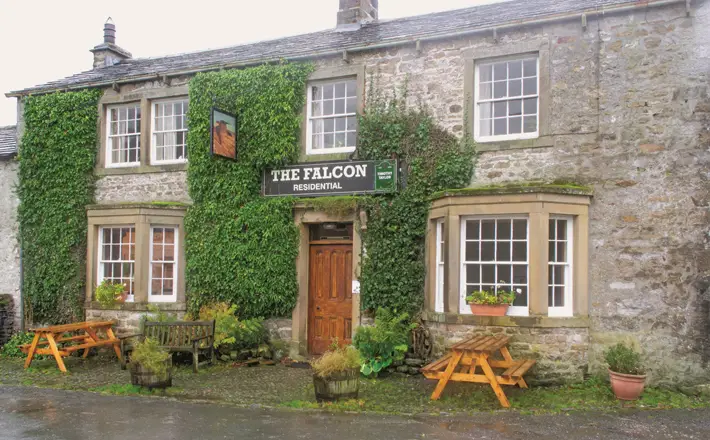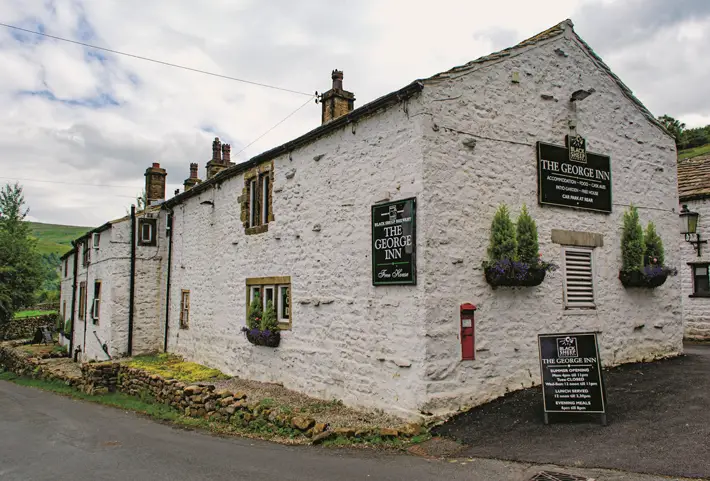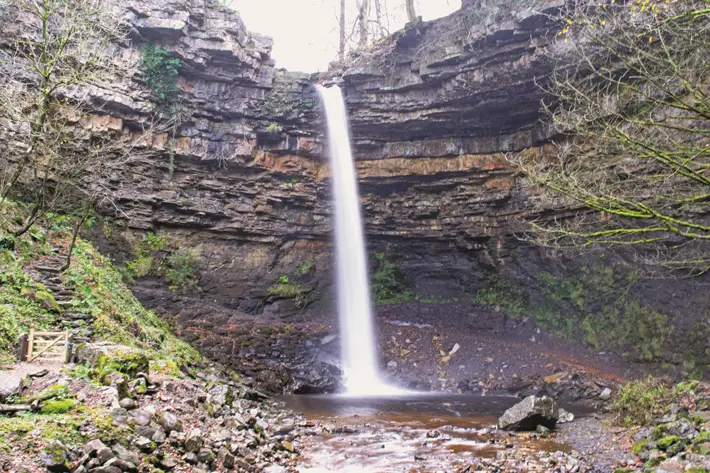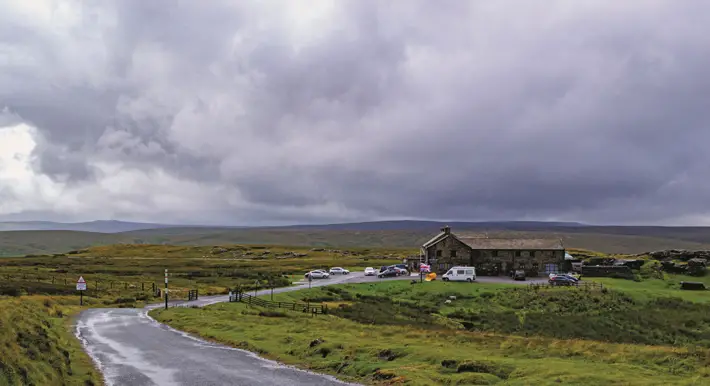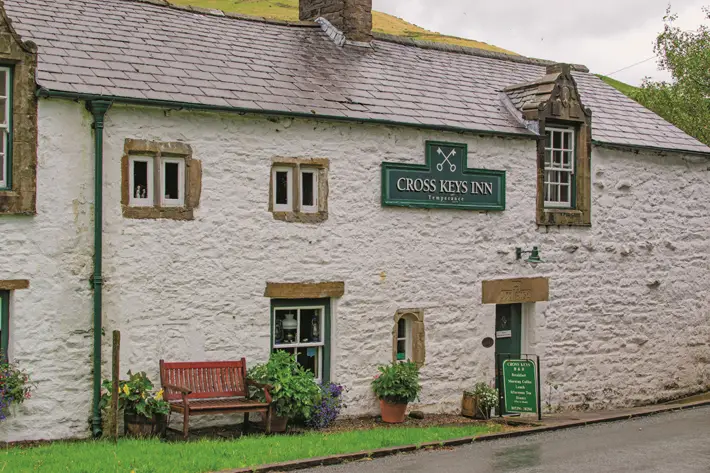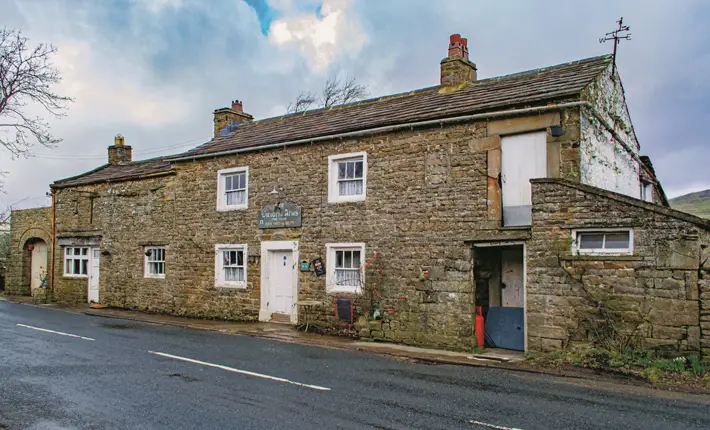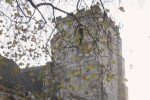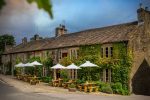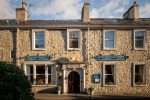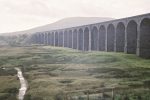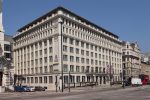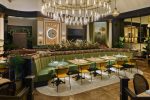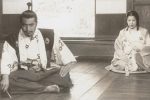The Best Pubs of the Yorkshire Dales
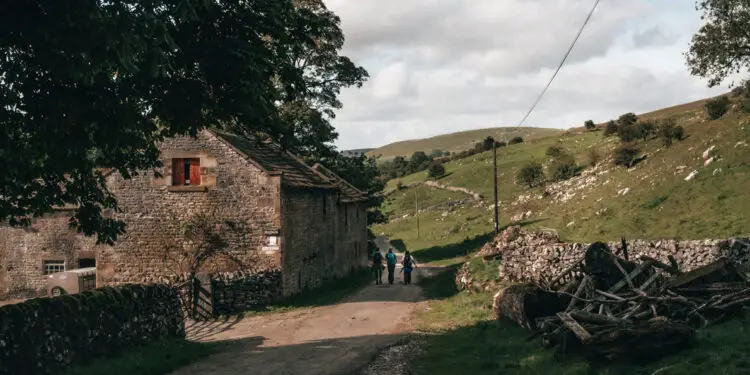
By Mike Appleton
Everyone likes a good pub, don’t they? The Dales has several fine inns that have been welcoming wayfarers for hundreds of years. Some were former farmhouses and courthouses whilst others acted as a hub for miners, workers and, yes, teetotallers. Then, there’s the former alehouses connected to TV, film and celebrated playwrights and those made famous by commercials.
It is impossible to list all the great inns the Yorkshire Dales has to offer, so here are a few of the author’s favourites, for varying reasons.
The Falcon Inn, Arncliffe
If there is a pub that rests on tradition, then the Falcon in Arncliffe is it. Modern furnishings are rare; this is a village pub with a history of more than 150 years that provides delicious food and good beer. It sells real ale as standard, of course, but Timothy Taylor’s Boltmaker is served from a jug after being drawn from the cask away from the bar. It allows the 4 per cent ABV ale to breathe and reach room temperature, arriving in your glass in the best possible condition. The pub’s exterior was used in ITV’s long-running Emmerdale until filming moved to Esholt in 1976 – the original ‘Woolpack’.
The George Inn, Hubberholme
This Grade II seventeenth-century pub is based in one of the quieter parts of the Dales with the beautiful River Wharfe rolling past. It was built in 1630 as a farmstead and became an inn in 1754. Before that it was a vicarage and that is how it became known locally as ‘the candle pub’. When the vicar was home, he would put a lit candle in the window to signal to his parishioners that they could come and see him. That custom continued when it became a pub and the current landlords still have a lit candle on the bar. Quite simply, when the candle is burning, the pub is open. It is easy to see why this pub attracts visitors from all over the Dales and beyond. Prolific writer and playwright J. B. Priestley frequented the village – and the inn – and called it the ‘pleasantest place in the world’. In the snug, near the bar, is a corner dedicated to him.
There’s also an annual land-letting ceremony that it hosts for the village. The Hubberholme Parliament meets each year to auction 16 acres (6.5 hectares) of pasture that was bequeathed to the parish back in the early nineteenth century. Taking place on the first Monday in January, a service is held at the village church to celebrate the forthcoming land-letting and then the vicar comes across to the pub with his wardens. Tradition says he must ask the landlord if he has prepared the candle and once it is lit, the auction begins. Anyone can bid for the land and when the candle goes out, whoever has the highest bid wins and hands the money over to the church. They gain the rights to graze the land whilst the church shares out the money to the poor in the parish. Traditionally, it has raised around £350 but it can go for well over £1,000 at times. It is fair to say it isn’t a lucrative commercial venture for the winner; it is a part of tradition and history, and helps those who need it in the parish.
The Green Dragon Inn, Hardraw
Until 2018, access to the wonderful Hardraw Force – the highest single-drop waterfall in England at 30 metres – was through The Green Dragon.
A simple trip through the thirteenth-century bar allowed you to walk to the amphitheatre created by the ‘force’ as it falls unbroken over carboniferous limestone, sandstone and then shale before plunging into a large pool. Now, visitors have to head to the heritage centre next door to see the waterfall, and if it is closed, pay a small fee to pass through a turnstile.
It is a shame as the pub is well worth a visit and the two will always be interlinked in many people’s memories. ‘Hardraw’ comes from the Old English for ‘shepherds dwelling’ and the land was once owned by Cistercian monks who kept a grange in the village. The early northern (Yorkist) kings would rally their troops at known locations such as ‘at the banner of the Green Dragon’ near the waterfall. It is possible this is the origin of the inn’s name and the pub’s sign does show a green dragon and white rose. Inside, it is a cracker with flagged floors, open fires, beamed ceilings and stone walls. A priests’ hiding hole was reportedly found in the 1970s above the former bar and kitchen area. Apparently, it led to the graveyard next door, but it is now filled in.
The Tan Hill Inn, near Reeth
The Tan Hill is England’s highest pub at 528 metres above sea level and dates back to the seventeenth century. It is on the Pennine Way and a sanctuary for those walking one of the most remote sections of the 430-kilometre walk. It is infamous for its punters being snowed in during the winter and not being able to leave until the thaw sets in. Provisions are said to have run incredibly low sometimes, and weary patrons often leave the pub to widespread media interest – and no doubt seeking a hangover cure! The pub stands on several historic packhorse and drovers’ routes into the Dales and a coal field that was exploited in the fourteenth century and once fed Richmond Castle. The pub was used by those miners (pre-hostelry it was used as a makeshift mortuary for local mining fatalities) and continued to be popular even after the last mine closed in 1929. Now, its porch is always open for those who need shelter, and the fire has never gone out in more than 100 years.
There have been several famous visitors over the years too. The Arctic Monkeys and Scouting for Girls have played there, BBC’s Elle Harrison sung ‘Ring of Fire’ for Countryfile and Richard Hammond filmed Top Gear at the pub too. It has also been the site of film and programme makers wanting a remote and unique location while Ted Moult and his famous double-glazing Everest ads had been filmed there in the 1980s.
The Cross Keys, near Cautley Spout
At the base of the stunning Cautley Spout is the Cross Keys, a 400-year-old inn with a fascinating past. It is currently a National Trust temperance inn, serving food in an iconic location. Early records suggest that it was built in the late sixteenth century with later extensions being made in the eighteenth and nineteenth centuries. In the 1800s, it was a farmhouse known as High Haygarth, with its transition to becoming an inn coming some twenty years later when the Cautley road was realigned to run past the farm – the occupants taking advantage of increased passing trade.
It was bought by Mrs Sarah Buck of Ravenstonedale in 1902, who paid £900, and she duly sold it on to Edith Adelaide Bunney who, promptly removed the alcohol licence. It remained with her until 1949, when she passed it to the National Trust to be held as an unlicensed inn, in memory of her sister Mary Blanche Hewetson. You can drink alcohol in Cross Keys – you must bring your own – but it is the food that makes it a real destination. It is traditional Yorkshire fayre, cooked well, and you can take on a ‘crundle’ – a traditional Westmorland dish made of enriched egg batter, served with stewed fruit.
The Victoria Arms, Worton
Many country pubs aspire to be traditional with some managing to look like the hostelries of yesteryear more easily than others. Wood panelling, open fires, and hand-pulled ales all add to the experience, but there’s a difference between something that is old, and something pretending to be.
The Victoria shuns all that because, quite simply, it hasn’t changed in decades. From its aging facia to the old interior, it’s what a pub would have been like before they all had to start serving food and supply snacks other than pork scratchings. Before 1960, the pub didn’t have a bar and the room on the left was a barn.
The Campaign for Real Ale (CAMRA) says, ‘Like no other pub in the Dales these days and, for its basic unpretentiousness, perhaps the nearest approximation to how they once were.’
They’re right too.
The Craven Arms, Appletreewick
Now here is a pub that looks old… because it is!
It dates to the sixteenth century and was part of Sir William Craven’s estate. He was the Lord Mayor of London in 1610 and was born to a pauper’s family in this small hamlet. It is suggested he was the inspiration behind some versions of the folk tale Dick Whittington – although the tale heralds from well before William was given the title.
He did play a huge role in the area: on his return from London he enlarged the High Hall, constructed the road from Appletreewick to Burnsall, built Burnsall Bridge and Burnsall School and repaired St Wilfrid’s Church. The pub has his coat of arms on the front as well as original fireplaces, low-beamed ceilings, and stone-flagged floors. Originally, it was a farmhouse and ‘grew’ into a pub because the occupant was brewing ale and selling it to passers-by.
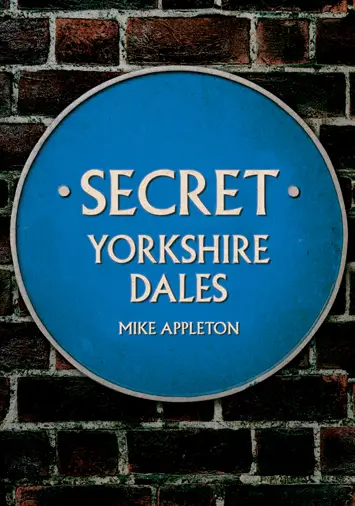
Power is supplied via gas, and you can see the lights at the entrance flickering as a result. Up until 1926, the Court Leet was held at the pub, dealing with petty crimes, and the village stocks are to the left of the building.
Out the back is a Cruck Barn – the first of its kind to be built in the Dales for around 400 years. It was constructed by Robert Aynesworth, a member of the family who owns the Craven. He built it utilising the same traditional methods and it has a beam from the High Hall, alongside a heather-thatched roof, lime, and horsehair plaster, limewash and a huge log fire with sheep wool insulation. It is used for weddings, parties, and other such events like annual ferret-racing competitions, when the place is absolutely full of folk… and furry animals!
Article taken from ‘Secret Yorkshire Dales’ by Mike Appleton, published by Amberley Publishing, £14.99 paperback
